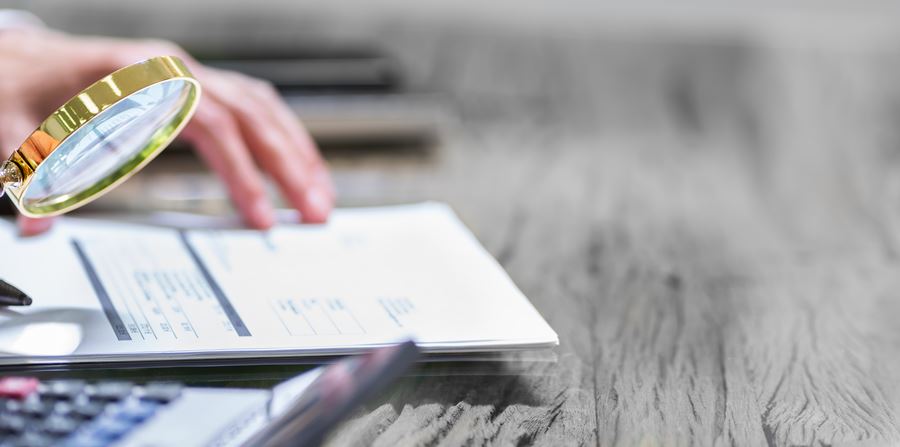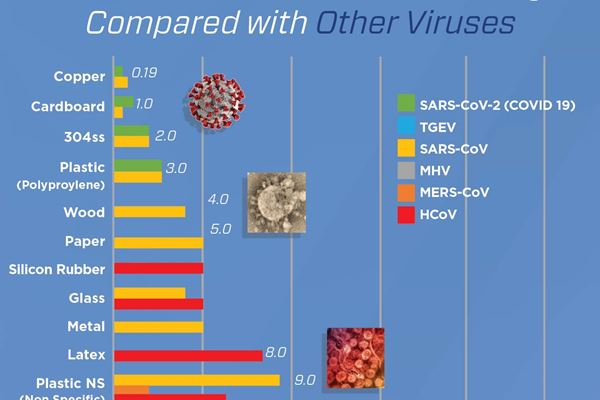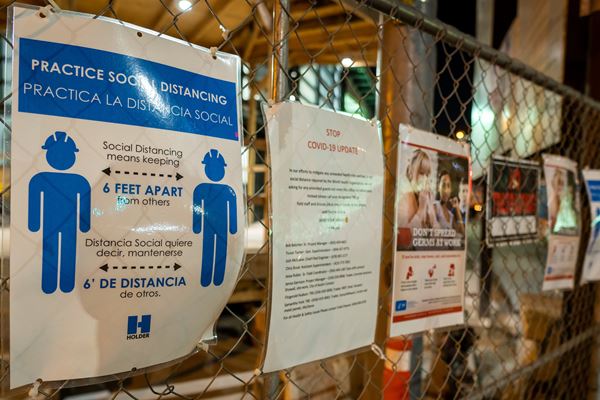Insurance Fraud in the COVID-19 Era

Most insurance carriers experience an increase of fraud-related losses following a catastrophe, such as a wildland fire, flood, or hurricane. This year, the fraud-related activity has been compounded by the global pandemic, COVID-19, which has made the adjustment process even more difficult.
Between the stark financial state of many businesses and homeowners, and the scams some policyholders are playing to exploit the pandemic, insurance companies are facing several claims that are fraudulent in nature. From fake car accidents to email phishing scams, to bankrupt small business owners destroying their own property, adjusters have had to take a closer look at insurance claims and investigations to make sure the truth is revealed. This is especially true as it relates to what may seem to be a small financial loss, which could in fact be tied to a larger, more organized loss. Due to this increase in fraudulent activity, legal and expert professionals need to be on the lookout for all claims, given our current economic status. Although it can be disheartening to hear of these schemes, they do exist.
Common Fraudulent Insurance Schemes
1. Jump-Ins
When people who were not in the car at the time of the accident file injury claims, they are considered jump-ins. This crime is committed in hopes of getting a settlement from another driver’s liability car insurance.1
2. Phishing/Spoofing/Spam
These are types of unsolicited emails that request or steal personal information. It is important to be on the lookout for emails from companies that claim to have access to COVID-19 testing kits, masks, ventilators, insurance, and cures, as these are common topics in an attempt to steal information through phishing emails. Additionally, stay aware of intercompany email phishing scams that may try to access login credentials and other sensitive information. With the state of our at-home workforce, cybersecurity threats are on the rise.
3. Give-Ups
When someone performs a fake theft or torch of their late-model vehicle, they are performing a give-up scheme. These cases typically spike as drivers go underwater with payments. This is common with expensive SUVs that guzzle gasoline or a second family vehicle that suddenly seems non-essential. We saw this with military personnel returning from a long deployment. A high-end expensive car was purchased with the thought the soldier would have about three years before his next deployment. Suddenly, he receives a short notice assignment to deploy and had to rid himself of a large monthly payment and the vehicle was found burned in a remote location.
4. Organized Auto Schemes
Organized crash rings2 may launch waves of fake whiplash claims, testing how insurer anti-fraud systems cope during the pandemic.
5. Small Business and Homeowner Arsons
Business owners or homeowners may commit arson to their homes if mortgages become unpayable. Sudden increases in policy limits by owners without the income to support the coverage could be a red flag. Insurance companies may see businesses or homes burn down just days or weeks after new policy limits take effect or just before a foreclosure is scheduled, which is a telltale sign of potential arson.
How COVID-19 Compares to Fraudulent Activity Post-Hurricane Katrina
Following a devastating catastrophe, property owners are faced with an insurmountable number of obstacles to get back to a normal state. Property insurance is an important part of the process of rebuilding and stabilizing affected lives following a disaster. In situations where the coverage is deemed to be adequate, the adjustment process can be quick and efficient. However, in cases where there is a lack of coverage, such as a hurricane that caused massive flooding or in under-insured scenarios, unscrupulous owners might look toward other, potentially fraudulent, ways to seek payment from the insurer.
Public attitudes following a disaster, where an impression that the big money insurers are unfair to the consumer, can impeded insurers in their fight against fraud. Following Hurricane Katrina, fraud was so rampant that the organization, National Center for Disaster Fraud (NCDF), was created to combat natural and man-made catastrophe-related fraud.
The Various Definitions of Fraud
Insurance fraud is any act committed to defraud an insurance process when the insured attempts to obtain some benefit or advantage that they are not entitled to. Though, insurance fraud definitions and laws can vary from state to state. For example, in Florida, "a person commits insurance fraud by submitting a claim based on a false, exaggerated or deliberate injury or loss."3
Each state sets individual requirements for the insurance industry to combat fraud but, in general, each insurer must have a fraud plan, along with its own or immediate access to a Special Investigations Unit (SIU). Additionally, the investigators working to reduce fraud-related losses must be aware of the state-specific requirements, especially when it comes to interviewing techniques and taking recorded statements.
Fraud Investigations
Fraud investigations typically include interviews, collection of evidence, site examinations, and collaboration with internal departments and external agencies that may aid in supporting a fraud complaint in court proceedings. This type of investigator must be skilled in recognizing deception and may need the ability to conduct computer-based or remote investigations, especially given today’s virtual climate.
A reliable fraud investigation is conducted in a systematic and scientific way. The investigators' process is driven by the scientific method. During a fraud investigation, the investigator is very careful not to destroy items that may need to be viewed by another interested party, while being alert to identify who those parties might be. Touring the loss site in a 360-degree pattern, starting from the area of little or no damage to the area of most extreme damage, prevents accidental damage to critical evidence and fosters thoroughness and replication should it become necessary to view the site again for the first time.
Additionally, investigations may use technology, such as 3D scanning, or forensic imaging, and drone footage, which can assist with off-site visuals. This can allow claims professionals, witnesses, or a potential jury to walk through a scene in the same footsteps as an investigator via a 3D imaging capture or video. The phrase, a picture is worth a thousand words, pales in comparison to a 3D rendering of a loss site that depicts everything in great detail. It increases the quality of data retrieved from a scene and allows for the utmost preservation and documentation of evidence.
In-depth and thorough claims investigations that comply with the individual state statutes are essential in reducing fraud-related insurance losses. The Federal Bureau of Investigation (FBI) estimates that the total cost of insurance fraud, not including health insurance, is more than $40 billion per year.
When investigating an insurance claim, the identification of fraud indicators is important to claims professionals and investigators but no single indicator by itself indicates that fraud is occurring. While the presence of any of these indicators individually does not mean that the claim is fraudulent, the presence of multiple items on one claim can make it suspicious.
Common indicators of insurance fraud include the following:
- Business competition
- Claims for services never provided or equipment never delivered
- Controversies with neighbours, contractors, or municipalities
- Different or changing versions of the events leading to the loss
- Domestic issues
- Evidence to suggest a falsification of injuries
- Falsifying facts
- Financial obligations including overdue loans, credit cards, and liens
- History of prior claims
- Holiday timed losses
- Insured receives notice of cancellation within thirty days
- Lack of personal effects or pets in a residence
- Lack of specific coverage or previous denial of coverage
- Lack of contents or replacement of contents prior to the loss
- New policy or one that is ready to expire
- Over familiarity with the claims process
- Padding or inflating a general claim
- Pre-existing structural damage unrelated to the loss
- Property damage that does not match the story or injuries
- Property value higher without the structure
- Staging accidents
- Unusual fire location, such as in the middle of a floor or hallway
In this trying era of COVID-19 and the seemingly endless catastrophe events, all claims professionals, investigators, and insurance experts must remain on guard and continue to thoroughly investigate each claim. Insurers have begun to expand their anti-fraud technologies at the underwriting process, as insurance fraud is becoming more complex and sophisticated each day. As insurance companies are restricted from sharing information directly with other insurance companies, it is imperative to fully investigate losses regardless of severity because what may seem like an unassociated, financially small loss, could be related to something much larger, stretching far beyond a single insurance company.
Sources
1https://www.forbes.com/advisor/car-insurance/liability-insurance/
3Florida Insurance Fraud Law, Florida Statutes Section 817.234, found at https://statelaws.findlaw.com/florida-law/florida-insurance-fraud-laws.html
Our experts are ready to help.



